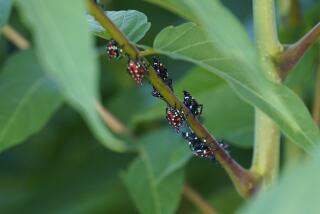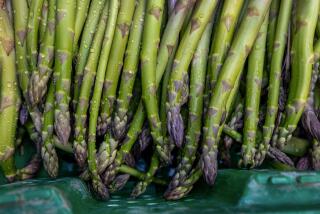Clementines Become a U.S. Darling
WASHINGTON — Clementines are no longer just for Christmas stockings. The small Spanish oranges sold in small wooden boxes have become a winter staple in much of the United States.
“My daughter won’t eat other oranges but she’ll devour clementines,” Enid Kassner of Arlington, Va., said after picking up a box at a suburban Washington supermarket. “You can peel them easily, they don’t have seeds and they’re sweet.”
The U.S. imported 86,453 tons of clementines and other mandarin oranges from Spain last winter, compared with 51,536 tons the year before, the Agriculture Department said. Six years ago, the nation imported less than 5,000 tons.
The California navel orange is still the main table orange in the U.S., with annual production of 1.3 million tons. But California, at the suggestion of the state’s citrus growers, tightened its inspection standards this fall to improve the quality of the navel oranges going to supermarkets.
The clementine “is definitely a cause for concern,” said Joel Nelsen, president of California Citrus Mutual, a trade association. “It’s phenomenal that these producers can be making money at the low prices that this fruit is [getting] in the United States. Nevertheless, it’s coming.”
California growers planted about 5,000 acres of their own clementine trees to get in on the market. The new orchards should be coming into production next year, Nelsen said.
Clementines have long been popular in Europe, but Spanish cooperatives now send shiploads of clementines to the U.S. every week from November into February.
One of the secrets to their success was in getting refrigerated boats that could be kept cold enough to kill any fruit flies that may be accompanying the clementines during the 12-day ocean crossing, said Luke Sears, president of LGS Specialty Sales Ltd., a New York company that imports clementines from two large Spanish cooperatives. The flies would be a threat to U.S. citrus production.
When the oranges were still a specialty item in fruit stands, the fruit was transported in containers on ships with furniture and other cargo.
“The key is that you’re getting a consistent supply, which would enable the supermarket to advertise and promote it,” he said.
The 5-pound wooden box, which originated in Canada, also helped sell shoppers on clementines, because it sets the fruit apart from other citrus that is normally sold loose, he said.
Clementines first became popular in the Northeast, where they arrive by ship from Spain, but have since spread to stores from coast to coast. Albertson’s Inc., one of the nation’s largest supermarket chains, introduced them in large quantities last year in California.
“As these clementines are becoming more and more popular and customers are recognizing them more and more, we’re putting them into more of our stores,” Albertson’s spokeswoman Jeannette Duwe said.
California’s new inspection standards will require a larger number of navel oranges in each lot to be checked for their maturity and ratio of sugar to acid. The higher the ratio, the sweeter the oranges will be.
“Unfortunately, in the past we became a bit complacent,” Nelsen said. “We believe we have a much better tasting fruit out on the market.”
More to Read
Eat your way across L.A.
Get our weekly Tasting Notes newsletter for reviews, news and more.
You may occasionally receive promotional content from the Los Angeles Times.










